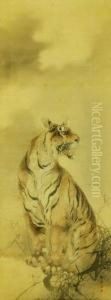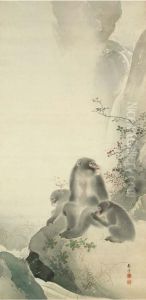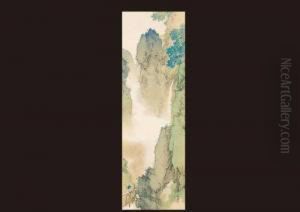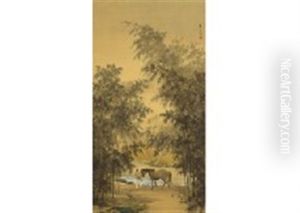Tanaka Raisho Paintings
Tanaka Raisho was a distinguished Japanese painter who flourished during the late Edo period, a time characterized by significant social, political, and cultural transformation in Japan. Born in 1776, Raisho was an eminent figure in the realm of nanga (literati painting), a style that emphasized the importance of personal expression and the intellectual and emotional connection between the artist and their work. This style was deeply influenced by Chinese literati painting, reflecting a broader cultural admiration for Chinese art, literature, and philosophy among educated Japanese elites of the time.
Raisho's paintings are notable for their delicate brushwork and subtle use of ink wash, which imbue his landscapes with a sense of depth and tranquility. His works often depict traditional Japanese and Chinese themes, such as mountain landscapes, waterfalls, rivers, and the flora and fauna of both countries. These subjects were not merely aesthetic choices but also carried significant philosophical and cultural connotations, reflecting the artist's engagement with Confucian, Taoist, and Buddhist thought.
Throughout his career, Tanaka Raisho collaborated with and was influenced by other prominent figures in the nanga community, such as Ike no Taiga and Yosa Buson. Despite the mutual influence within this circle, Raisho's style remained distinctive, characterized by a more restrained and refined aesthetic compared to the work of some of his contemporaries. His art was not only a means of personal expression but also a vehicle for imparting moral and philosophical lessons, aligning with the literati ideal of the artist as both a scholar and a moral guide.
Raisho's influence extended beyond his lifetime, contributing to the continued evolution of nanga painting and its principles. Through his works, he left a lasting legacy that highlights the importance of harmony between humanity and nature, a theme that resonates with contemporary ecological concerns. Tanaka Raisho passed away in 1845, but his art remains a cherished part of Japan's cultural heritage, appreciated for its aesthetic beauty and depth of meaning.



